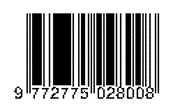THE HABIT OF USING HAND SANITIZER AMONG TEENAGERS AND ITS EFFECTIVENESS COMPARED TO WASHING HANDS – A LITERATURE REVIEW
Downloads
Introduction: The spread of infectious diseases occurs when disease-causing agents, such as bacteria, viruses, or germs move and infect from one person to another. Teenage is a phase that is very vulnerable to contracting infectious diseases because it is at a stage of physical development, emotional changes, and increased social relationships. One practical way to prevent infectious diseases is to kill disease-causing agents by washing hands. However, its use is often replaced with a more realistic hand sanitizer. For this reason, this research will compare the efficacy of hand sanitizers and hand washing specifically among teenage populations. Methods: This research is a literature study that uses secondary data from publications published in 2007-2024 and is relevant to the topic of discussion. Of the 16,800 articles according to keywords, 8 articles were found that met the criteria for further discussion. Results: The results of the eight journals selected according to the requirements showed that 3 journals stated that using hand sanitizer was more effective than washing hands. Meanwhile, 5 other journals stated that washing hands was more effective than hand sanitizer. Because, there are still remaining germs, bacteria, and viruses stuck to the hands. Moreover, hand sanitizers are not able to clean the deepest layers of the skin, and long-term use also makes the skin dry and irritated because hand sanitizers contain quite high amounts of alcohol. Conclusions: For this reason, teenagers are expected to prioritize washing their hands with soap and running water rather than using hand sanitizer.
Adriani. (2022). Efektivitas Pendidikan Kesehatan Terhadap Perilaku Cuci Tangan Pakai Sabun Dalam Upaya Pencegahan Covid-19. Nuring Journal (RNJ), 4(2), 1–5. http://dx.doi.org/10.32883/rnj.v4i2.1268.
Budiwibowo, Arif. (2023). Efektivitas Promosi Kesehatan Cuci Tangan oleh peer group terhahap Pelaksanaan Perilaku Hidup Bersih dan Sehat di Pesantren Imam Syafi’iy Kota Bima Ayatullah. Professional Health Journal. 3(2), 203-216, https://doi.org/10.54832/phj.v3i2.423.
Azor-Martinez, E., Cobos-Carrascosa, E., Gimenez-Sanchez, F., Martinez-Lopez, J. M., Garrido-Fernandez, P., Santisteban-Martinez, J., Seijas-Vazquez, M. L., Campos-Fernandez, M. A., & Bonillo-Perales, A. (2014). Effectiveness of a multifactorial handwashing program to reduce school absenteeism due to acute gastroenteritis. Pediatric Infectious Disease Journal, 33(2). https://doi.org/10.1097/INF.0000000000000040
Breidablik, H. J., Johannessen, L., Andersen, J. R., Soreide, H., & Kleiven, O. T. (2023). Effect of Optimal Alcohol-Based Hand Rub among Nurse Students Compared with Everyday Practice among Random Adults; Can Water-Based Hand Rub Combined with a Hand Dryer Machine Be an Alternative to Remove E. coli Contamination from Hands? Microorganisms, 11(2). https://doi.org/10.3390/microorganisms11020325
Duane, B., Pilling, J., Saget, S., Ashley, P., Pinhas, A. R., & Lyne, A. (2022). Hand hygiene with hand sanitizer versus handwashing: what are the planetary health consequences? Environmental Science and Pollution Research, 29(32), 48736–48747. https://doi.org/10.1007/s11356-022-18918-4
Dwi Elisanti, A., Ardianto, E. T., Cholifah Ida, N., Hendriatno, E. (2021). Efektifitas Paparan Sinar Uv Dan Alkohol 70% Terhadap Total Bakteri Pada Uang Kertas Yang Beredar Di Masa Pandemi Covid-19. Jurnal Riset Kefarmasian Indonesia, 2 (2), 113-121. http://orcid.org/0000-0001-7580-6832.
Handayani. (2022). Perbedaan Efektivitas Metode Demonstrasi Dan Pemutaran Video Animasi Dalam Meningkatkan Pengetahuan Cuci Tangan Pakai Sabun Siswa Sdn 043/Xi Koto Renah. Jurnal Sehat Mandiri, 17(1), 2–8. https://doi.org/10.33761/jsm.v17i1.458.
Hasibuan, N. A. (2022). Uji Efektivitas Produk Antiseptik Hand Sanitizer Terhadap Daya Hambat Pertumbuhan Bakteri Staphylococcus Aureus Systematic Review. https://ecampus.poltekkes-medan.ac.id/jspui/handle/123456789/6767
Hayes, J. S., Vessey, J. A., Sherwood, J. J., Warner, D., & Clark, D. (n.d.). Practice Applications of Research Comparing Hand Washing to Hand Sanitizers in Reducing Elementary School Students’ Absenteeism 33(4).
Kweon, H., Choi, J. W., & Yoon, S. Y. (2022). Analysis of consumer exposure cases for alcohol-based disinfectant and hand sanitizer use against coronavirus disease 2019 (COVID-19). International Journal of Environmental Research and Public Health, 19(1). https://doi.org/10.3390/ijerph19010100
Lopez, T. K., Jones, K., Roseberry-Lincoln, A., Zidek, A., MacKinnon, L., & Marro, L. (2023). Adult and children’s use of hand sanitizer during a pandemic – an observational study. Journal of Exposure Science and Environmental Epidemiology, 33(6), 1004–1012. https://doi.org/10.1038/s41370-022-00479-w
Lusiana, R. A., Widodo, D. S., Suyanti, L., Gunawan, G., & Haris, A. (2020). Edukasi Pembuatan Hand Sanitizer Berbasis Lidah Buaya pada Masyarakat Desa Harjowinangun, Grobogan. Jurnal Pengabdian Kepada Masyarakat (JPKM) Tabikpun, 1(1), 47–54. https://doi.org/10.23960/jpkmt.v1i1.19
Marumure, J., Makuvara, Z., Alufasi, R., Chapungu, L., & Gufe, C. (2022). Effectiveness of hand sanitizers in the prevention of COVID-19 and related public health concerns: A review. Cogent Public Health, 9(1). https://doi.org/10.1080/27707571.2022.2060904
Munn, Z., Tufanaru, C., Lockwood, C., Stern, C., McAneney, H., & Barker, T. H. (2020). Rinse-free hand wash for reducing absenteeism among preschool and school children. In Cochrane Database of Systematic Reviews (Vol. 2020, Issue 4). John Wiley and Sons Ltd. https://doi.org/10.1002/14651858.CD012566.pub2
Muntahaya, F., Batuah, T. F., & Nisa, H. (2021). Preventive Behaviors Related to Covid-19 Among High School Students: Cross-Sectional Web-Based Survey. Jurnal Ilmu Dan Teknologi Kesehatan, 8(2), 143–157. https://doi.org/10.32668/jitek.v8i2.507
Nakoe, M. R., Ayini, N., Lalu, S., & Mohamad, Y. A. (2020). Perbedaan Efektivitas Hand-Sanitizer Dengan Cuci Tangan Menggunakan Sabun Sebagai Bentuk Pencegahan Covid-19 Difference in the effectiveness of hand-sanitizer by washing hands using soap as a covid-19 preventive meas, 2(2).
Nawangwulan, E. E., Pamungkasari, E. P., & Widyaningsih, V. (2022). The Influence of Health, Social, and Economic Determinants on the Obesity to Teenagers during the COVID-19 Pandemic. Open Access Macedonian Journal of Medical Sciences, 10(E), 941–947. https://doi.org/10.3889/oamjms.2022.9390
Olena Doronina, R. N., Jones, D., Martello, M., Biron, A., & Lavoie-Tremblay, M. (2017). A Systematic Review on the Effectiveness of Interventions to Improve Hand Hygiene Compliance of Nurses in the Hospital Setting. Journal of Nursing Scholarship, 49(2), 143–152. https://doi.org/10.1111/jnu.12274
Oppong, T. B., Yang, H., Amponsem-Boateng, C., & Duan, G. (2019). Hand hygiene habits of Ghanaian youths in Accra. International Journal of Environmental Research and Public Health, 16(11). https://doi.org/10.3390/ijerph16111964
Pratinidhi, S. A., Haribhakta, S. V., Ambike, D. A., Bhole, O., & Kankariya, B. (2019). Study of knowledge and practices related to handwashing in school going children of a rural community. International Journal Priest, P., McKenzie, J. E., Audas, R., Poore, M., Brunton, C., & Reeves, L. (2015). Hand sanitiser provision for reducing illness absences in primary school children: A cluster randomised trial. PLoS Medicine, 11(8). https://doi.org/10.1371/journal.pmed.1001700
Qur’ana, A., Ais, A., Tsani, A. L., Judoko, F., Ramadhanti, H. A., Suryani, M., Rifkha, D. A., Aulia, N. I., Hanifa, Q., Anggraina, R. D., Salsabila, S., & Utami, W. (2022). Pengetahuan, Sikap, dan Perilaku Penggunaan Masker dan Hand Sanitizer saat Pandemi COVID-19 pada Generasi Milenial di Jawa Timur. In Jurnal Farmasi Komunitas. 9(1).
Sagong, H. J., Lee, Y.-M., Choi, E., & Kim, K. (2022). Related Factors for Not Washing Hands at School among Adolescents. J Agric Med Community Health, 47(1), 14–26. https://doi.org/10.5393/JAMCH.2022.47.1.014
Santos, C., Kieszak, S., Wang, A., Law, R., Schier, J., & Wolkin, A. (2017). Reported Adverse Health Effects in Children from Ingestion of Alcohol-Based Hand Sanitizers-United States (Vol. 66, Issue 8). https://www.npds.us.
Singh, P., Potlia, I., Malhotra, S., Dubey, H., & Chauhan, H. (2020). Hand Sanitizer an Alternative to Hand Washing—A Review of Literature. In Journal of Advanced Oral Research (Vol. 11, Issue 2, pp. 137–142). Sage Publications India Pvt. Ltd. https://doi.org/10.1177/2320206820939403
Torner, N., Soldevila, N., Garcia, J. J., Launes, C., Godoy, P., Castilla, J., & Dominguez, A. (2015). Effectiveness of non-pharmaceutical measures in preventing pediatric influenza: A case-control study. BMC Public Health, 15(1). https://doi.org/10.1186/s12889-015-1890-3
Tuladhar, E., Hazeleger, W. C., Koopmans, M., Zwietering, M. H., Duizer, E., & Beumer, R. R. (2015). Reducing viral contamination from finger pads: Handwashing is more effective than alcohol-based hand disinfectants. Journal of Hospital Infection, 90(3), 226–234. https://doi.org/10.1016/j.jhin.2015.02.019
Vessey, J. A., Sherwood, J. J., Warner, D., & Clark, D. (2007). Comparing hand washing to hand sanitizers in reducing elementary school students’ absenteeism. Pediatric Nursing, 33(4), 368–372.
Zhang, D.-F., Lee, M.-S., Hong, S., Yang, N.-Y., Hwang, H.-J., Kim, B.-H., Kim, H.-S., Kim, E.-Y., Park, Y.-J., Lim, G.-U., & Kim, Y.-T. (2015). Relationship between handwashing practices and infectious diseases in Korean students. Journal of Agricultural Medicine and Community Health, 40(4), 206–220. https://doi.org/10.5393/jamch.2015.40.4.206
Copyright (c) 2024 Belgis Belgis, Zahrah Fatmalouisa Algadrie

This work is licensed under a Creative Commons Attribution 4.0 International License.
Copyright Notice
1. The journal allows the author to hold the copyright of the article without restrictions.
2. The journal allows the author(s) to retain publishing rights without restrictions.
3. The legal formal aspect of journal publication accessibility refers to Creative Commons Attribution (CC BY).














